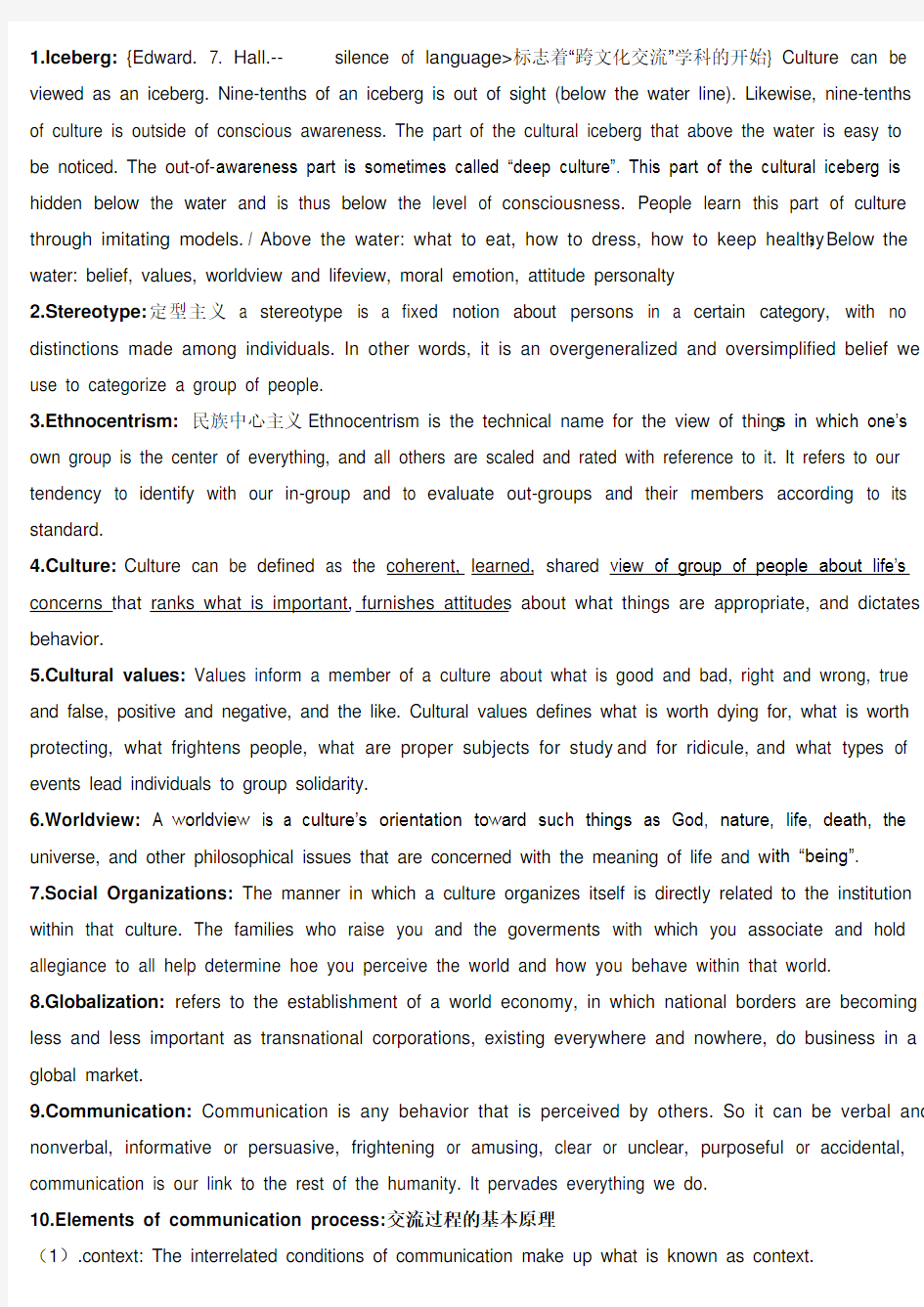
新编跨文化交际期末复习资料
- 格式:doc
- 大小:51.50 KB
- 文档页数:5


1.Iceberg:{Edward. 7. Hall.--
2.Stereotype:定型主义 a stereotype is a fixed notion about persons in a certain category, with no distinctions made among individuals. In other words, it is an overgeneralized and oversimplified belief we use to categorize a group of people.
3.Ethnocentrism: 民族中心主义Ethnocentrism is the technical name for the view of thing s in which one’s own group is the center of everything, and all others are scaled and rated with reference to it. It refers to our tendency to identify with our in-group and to evaluate out-groups and their members according to its standard.
4.Culture:Culture can be defined as the coherent, learned, shared view of group of people about life’s concerns that ranks what is important, furnishes attitudes about what things are appropriate, and dictates behavior.
5.Cultural values: Values inform a member of a culture about what is good and bad, right and wrong, true and false, positive and negative, and the like. Cultural values defines what is worth dying for, what is worth protecting, what frightens people, what are proper subjects for study and for ridicule, and what types of events lead individuals to group solidarity.
6.Worldview: A worldview is a culture’s orientation toward such things as God, nature, life, death, the universe, and other philosophical issues that are concerned with the meaning of life and w ith “being”.
7.Social Organizations: The manner in which a culture organizes itself is directly related to the institution within that culture. The families who raise you and the goverments with which you associate and hold allegiance to all help determine hoe you perceive the world and how you behave within that world.
8.Globalization: refers to the establishment of a world economy, in which national borders are becoming less and less important as transnational corporations, existing everywhere and nowhere, do business in a global market.
munication: Communication is any behavior that is perceived by others. So it can be verbal and nonverbal, informative or persuasive, frightening or amusing, clear or unclear, purposeful or accidental, communication is our link to the rest of the humanity. It pervades everything we do.
10.Elements of communication process:交流过程的基本原理
(1).context: The interrelated conditions of communication make up what is known as context.